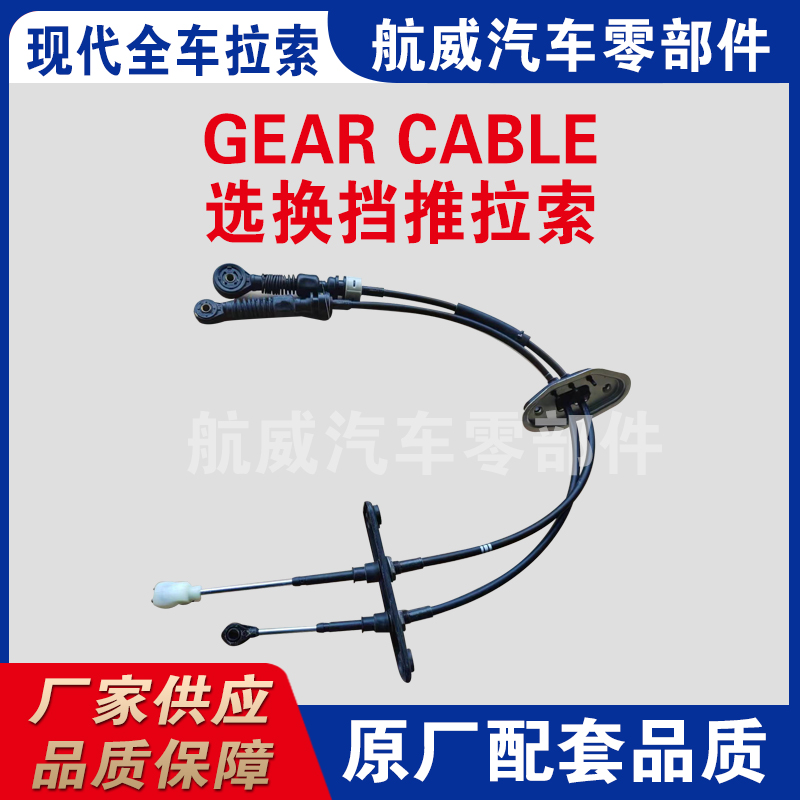throttle cable
Understanding Throttle Cables Key Components of Vehicle Performance
Throttle cables are integral components in various vehicles, linking the accelerator pedal to the engine, thus playing a crucial role in controlling the engine's power output. These cables have been utilized in automotive design for decades, allowing for smooth operation and responsiveness when the driver accelerates. In the world of automotive engineering, understanding the function and importance of throttle cables is essential for both mechanics and car enthusiasts alike.
The primary function of a throttle cable is to transmit the driver’s intention from the accelerator pedal to the throttle body in the engine. When the driver presses down on the accelerator, it pulls the throttle cable, and this motion opens the throttle plate in the engine, allowing more air and fuel to enter the combustion chamber. This process effectively increases engine power and vehicle speed. Conversely, when the pedal is released, the cable returns to its original position, closing the throttle and reducing power output.
Most modern vehicles use electronic throttle control systems, also known as drive-by-wire systems, which replace traditional mechanical throttle cables with sensors and electronic actuators. Despite this technological shift, traditional throttle cables are still prevalent in many older model vehicles and certain motorcycles. Understanding the mechanics of these cables is essential for maintaining optimal performance in such vehicles.
Throttle cables typically consist of a durable outer casing and an inner wire. The outer casing is designed to withstand harsh environmental conditions and mechanical wear, ensuring longevity. The inner wire, often coated with a lubricating material, allows for smooth motion as it pulls and releases. Over time, however, these cables can become frayed, corroded, or bound, leading to inconsistent throttle response, which can impact performance.
throttle cable

Regular maintenance of throttle cables is crucial for ensuring a vehicle's reliability. Mechanics often recommend inspecting the cables for any signs of wear or damage during routine vehicle check-ups. Any fraying or stiffness should be addressed immediately to prevent a throttle cable failure, which could result in loss of control over the vehicle. Additionally, cleaning the cable and applying suitable lubricants can help maintain smooth operation and prolong its lifespan.
When replacing a throttle cable, it’s vital to select the correct part for the specific make and model of the vehicle. Using an ill-fitting cable can lead to further mechanical issues and can compromise safety. The installation process requires precision, as improper installation can result in malfunctioning throttle response. It’s often advisable for vehicle owners to seek professional assistance when replacing throttle cables to ensure proper fitment and functionality.
In the motorsports world, throttle cables are finely tuned to deliver precise throttle response. Racing teams often experiment with different cable lengths and materials to achieve the desired acceleration and control characteristics. This can significantly affect lap times and overall vehicle performance, demonstrating the importance of throttle cables not just in daily driving but also in high-performance scenarios.
In conclusion, throttle cables are indispensable components that directly affect vehicle performance and safety. Understanding their operation, maintenance requirements, and the effects of wear can contribute to a better driving experience. Whether you're a casual driver or an automotive enthusiast, paying attention to the condition of your throttle cable can ensure your vehicle operates at its best, providing both responsiveness and reliability on the road.
-
Upgrade Your Vehicle with High-Quality Handbrake CablesNewsNov.01,2024
-
Optimize Your Bike's Performance with Quality CablesNewsNov.01,2024
-
Enhance Your Vehicle's Performance with Quality Clutch ComponentsNewsNov.01,2024
-
Elevate Your Vehicle's Performance with Quality Throttle CablesNewsNov.01,2024
-
Elevate Your Vehicle's Performance with Quality CablesNewsNov.01,2024
-
Affordable Solutions for Your Cable NeedsNewsNov.01,2024
